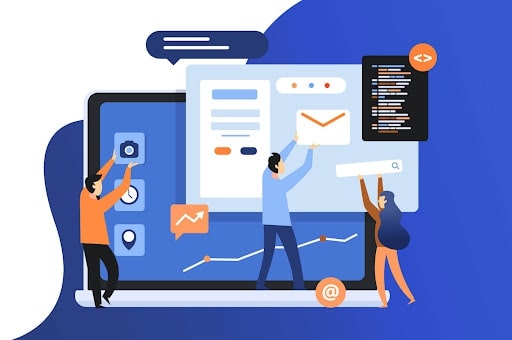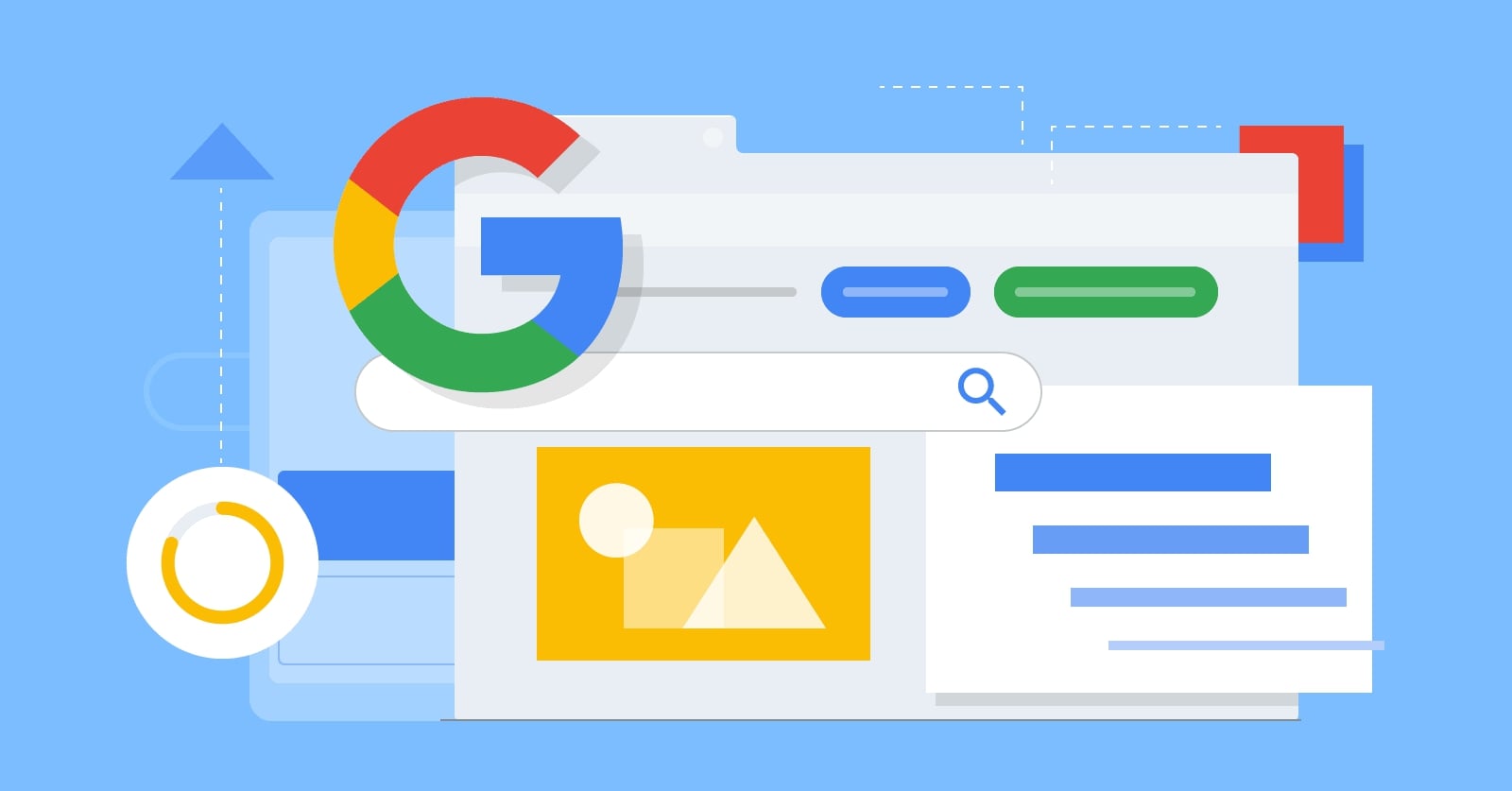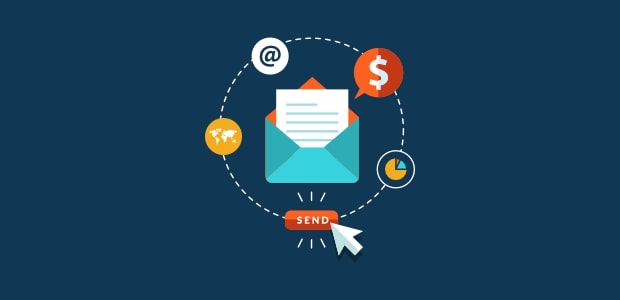How to Build an Initial Marketing Strategy for your Small Business
There are a number of ways to demonstrate your organization’s strong online presence, whether you’re in the midst of launching a new business or already have one. Digital marketing is useful for businesses that want to monitor return on investment (ROI) and brand awareness. Digital marketing is both a requirement and vital to your company’s overall success.
It is just as crucial for local businesses to keep current and relevant information available for their clients. If you’re a small business owner who knows little about online marketing, you might find everything mentioned here to be strange or strange-sounding. We’ll help you build and optimize your marketing strategy, and we’ll help you gain new clients.
Digital marketing for small businesses in the COVID-19 epidemic

The COVID-19 pandemic has had a significant impact on many industries, especially the way people do things like buying, working, and living. Currently, more people are working from home and shopping online than ever before. These days, there are no events where we socialize, which has shifted how we interact with each other. In fact, governments across the globe regularly encourage people to avoid leaving the house. The present system has shifted, and nobody knows how long it will continue.
This is a really difficult period for businesses. Although, it’s time to put in place a new strategic approach to keep the ship afloat while the COVID-19 crisis is underway, as well as once the crisis has over. Companies big and small today see the need of being nimble and able to change with the changing economy. The devastating impact the pandemic has on people’s lives causes them to search for new and better ways to get their needs without putting themselves at risk. Due to this, there are several options for businesses to utilize the internet.
Awareness is the goal of marketing, and building a pipeline of qualified leads is how you achieve it. Getting the word out with a small business can be difficult because of limited exposure and lack of financial or time resources. On the other hand, you can use a number of marketing methods to grow your small business’s marketing activities. A marketing plan tailored to your company’s needs might help you navigate the challenges of scaling.
How to build an initial marketing strategy for your small business
When you are trying to establish a marketing strategy for a small business, everything from your web marketing strategies to the type of product you sell can seem daunting. Many alternative strategies and methods exist, and there are hundreds of different publications recommending one method as the best option.
There’s no silver bullet for marketing that will work for every small business. To implement an effective marketing plan, you should follow these steps.
Step 1: Know your target market

When it comes to leveraging your small business, a niche is where you’ll have the most opportunity. To gain market penetration, it is essential to comprehend your customers’ concerns, concerns, problems, and triggering events.
What are your customers like when they’re looking for your product or service? What pain points do they have? What are they doing? If you want to design a website that is targeted towards the type of customer you hope to acquire, you should take the time to develop a buyer persona.
What factors are encouraging them to make a purchase? What does success look like? The more you know about these topics, the better you’ll be at creating an engaging message to spread your solution.
Before you go and work with new people, it’s best to take a look at who you already have and who you want to help. After that, you need to construct a buyer persona in order to get inside the mindset of your ideal client.
When it comes to marketing, there are countless paths you can take. It’s easy to do too much since it’s enticing to make a complex machine in hopes that you’ve covered all your bases. Instead, focus on the place where you see the greatest impact. The largest hole in your marketing is the one you can’t see. Focus on activities and approaches that will help you accomplish a major performance goal. You can either broaden your activities or pivot to new efforts when you’ve made significant progress toward your primary objective.
Step 2: Build your business identity

Your company’s brand identity should remain consistent to make you look more professional and assist in the growth of your customer base. One’s reputation is shaped not only by what others say about them while they’re not in the room, but also by the responses they get from others when they are. The simplest way to describe it is: Your brand is what people feel and think when they hear your company name.
Clear brand identification is vital for a small business’s consumers and future customers to recognize what their organization is, does, and stands for. Once they have selected their company’s brand identity, they must use a name, logo, colors, and images that help people recognize and connect with the brand.

A business owner might use a freelancer or collaborate with an established agency to assist build a brand-looking look. Although this process costs money, it is well worth it in the end. To comprehend this concept, consider how well-known businesses like McDonald’s and Starbucks do in the recognition department and how that all has to do with the brand, logo, and color. Once a company has its logo, it should use it in every conceivable way. These items include business cards, email signatures, postcards, id card mockups and websites.
Step 3: Understand your value proposition

If you are of the same quality as your rival, there is no incentive for customers to do business with you. Your value proposition is what will set you apart from the competition in your market and persuade your customers to select you. It is hard to believe that you are better at just about anything than everyone else in the industry. Here’s how this is conveyed: It compels you to believe it.
Step 4: Create a website

Website design is equivalent to handing out business cards in today’s economy. When someone does a Google search, they see the Google company name at the top of the results page and get the first chance to make a good impression. Website building is the cornerstone of a marketing strategy.
A business’ website is a valuable marketing tool since it provides customers with additional information, garners free traffic via search engines, motivates people to visit their social media profiles, and establishes them as a marketing authority by publishing helpful material. It’s easy enough to set up a website if your firm is just getting started.
- Get a domain name. Select the name you like, and search to see if it is available. If it is, then you pay a monthly or annual charge to acquire it.
- Sign up for web hosting: another company hosts a company’s website and serves it to its consumers. This can be purchased from the same firm that originally purchased the domain name.
- Get a content management system (CMS): This allows you to create and update your website. Free options are available, but there are a number of them, so if a firm needs something more personalized or unique, they will be charged for paid themes.
Step 5: Leverage social media

Social networking websites like Facebook, Instagram, and LinkedIn can be good for smaller businesses to sell their products and services.
Sending your marketing money to the web via social media ads allows you to direct visitors to sign up on your website’s sign-up page. You should capture the names and email addresses of your potential customers as soon as possible, and you should continue to market to them throughout the year by sending them periodic email marketing campaigns featuring useful news, promotional offers, and information that might be relevant to them.
A major advantage of Facebook ads is that they are accessible and affordable. You may optimize campaigns by making use of several setting choices, so you can reach millions of consumers. Because these ads are commonly utilized in magazines, newspapers, or other print media, the total cost is substantially lower. You can now design hyper-targeted campaigns that allow you to manage who sees your advertising, resulting in considerably lower CPCs and much higher ROIs.
Social media has an additional benefit for small businesses since it allows them to offer organic content, which is free or very inexpensive and boosts their connection with customers. The central location for having business dialogues with leads and consumers, as well as learning about their issues and desires. For example, Instagram fashion influencers’ followers may actively search for new styles. A clothing retailer can create a regular direct sales channel by having an active, stylish customer.

Step 6: Focus on content marketing
In order to achieve long-term success, it is important to have a strong brand, understand your target market, and construct a website before creating content. One of the most valuable long-term marketing strategies is providing high-quality content that is both entertaining and consistent.

Using content strategically allows you to create great experiences, communicate with customers, provide vital messages, show why consumers should select you, answer queries, and establish trust in your business. Greater customers will come through this trust, resulting in more sales. Examples of content strategy tactics include Ebooks, videos, podcasts, blogs, newsletters, infographics, interviews with experts, practical use of business cases, guides and how-tos, competitions on social media, and so on.
Well-written, high-quality content can aid improve search engine optimization (SEO). Establishing yourself as an authority in your profession is only one of the many benefits of building a dedicated following. It’s a great approach to put you in contact with people.
Step 7: Consider starting a blog
For those prospects who have not yet made a purchasing decision, blogging is a terrific approach to create organic traffic. Credibility and positioning as a thought leader can be created as well.

You can use a free website platform like WordPress to establish a free website and then utilize one of their website templates. Even if you only write once a week, your website’s online visibility and client trust will both increase. Beginners should look at this post to learn how to write posts themselves.
When you get started, you may include a call to action that encourages readers to subscribe to your blog and they will receive email updates from you. This is a terrific method to begin the ball rolling when it comes to gathering leads and providing new clients with a means to learn more about your company without buying anything at this time.
Step 8: Use SEO to boost your rankings
One of the best marketing services you can use for your organization is SEO (search engine optimization). When someone conducts research online, web pages and material that are optimized for search engines are more likely to show up on the person’s results page. When looking for a top-notch digital marketing agency, look for firms that know how to adopt best practices in SEO.
Have you ever searched for yourself or your product/service online, even if you’re already in business? So, did you believe this to be the case, “Why is my website not appearing in Google?” You’re almost certain to have wondered, “How do I compare to other people on Google?” or “How can I boost my Google ranking?”
Sites or pages might appear in the top spots on the Google (or another search engine) search engine results page due to the web being filled with many different reasons (SERP). You should be focusing on a variety of search-oriented qualities like relevant keywords, the length of your material, high-quality content, how quickly your website loads, and how often you post.
The company approaches the search for the best piece of information with the intent of offering it to the searcher. It is also useless for me to look for a web page for a restaurant that is no longer in business and is located in Newport, Kentucky. A good restaurant could be found if you knew where to look, the website was straightforward to navigate, and information on the establishment was easily accessible.

You can benefit from SEO in order to improve your search ranking on Google. Begin by exploring the wonders of SEO by visiting The Ultimate Guide to SEO. Most SEO strategies include three components. Additionally, search engine optimization (SEO) techniques can be employed, including buyer persona study, keyword research, and on-page SEO research. This three-part process can assist you in learning how your target market does web research, and help you connect with the proper people to get noticed.
Step 9: Invest in online ads and pay-per-click advertising

Developing organic traffic takes time, and you want to make quick, short-term investments as a small firm. With short-term wins to jump-start additional objectives, pay-to-play methods that target consumers with strong intent are excellent.
The good news is that if you know that your target audience is using Google to search for your product or solution, then Google Ads are excellent for you. To be honest, if that isn’t the case, then you might consider using social media advertisements. While on social media, your prospects have less intent to buy, but with tailored ads and the proper number of impressions, you may entice your audience.
As an alternative to traditional web marketing, small businesses should use pay-per-click (PPC) advertising. PPC can be both paid social media ads and paid search ads. Advertisers pay fees every time a user clicks on a PPC ad.
The average cost-per-click on the Search Network for PPC campaigns is $1-$2. Just like any other advertisement, the goal is to motivate them to purchase. To this aim, a click for $1 that results in a $100 sale would be an excellent ROI. That’s why PPC marketing is the way it is.
Step 10: Use email marketing

Your email marketing strategy is essential to your overall marketing plan. This approach is free, simple, and scalable for not only making new customers but also for keeping in touch with clients you already have.
You should experiment with email newsletters and other promotions to your database once you have an email marketing platform in place. When you don’t have a lot of spare time, consider marketing automation to make digital marketing simpler for you.
When you have produced a consistent supply of relevant material, as well as generating landing pages, you should aim to disseminate that information to those prospects who appear to be the most curious to learn more about your offer. It is important to establish an email marketing plan for this reason.
To protect your subscribers from being bombarded with emails, be careful not to send too many emails. At the same time, it is important to send just enough emails to keep your subscribers informed and interested. A new email campaign that has never been sent can be established using solutions like Avada E-mail Marketing or a variety of other budget-friendly tools. Advanced email analytics that track open and clicks rates are offered by many programs.
Step 11: Provide value by sharing your knowledge

Sharing your expertise can assist others in your local community and online. While others will be able to expand their skill sets, you will be able to advertise yourself and your business.
If you find yourself in a strong position, there are several strategies you can employ to take advantage of it. For instance, you can join online forums like Quora, and you can answer questions in these communities. In addition to creating your own unique social media presence, you can take part in related social media forums on your specialist areas, host webinars and podcasts on vital themes, and solicit the assistance of other professionals to give you greater visibility and breadth.
Step 12: Network and Partner
In addition to face-to-face networking, you can use online forums to meet other industry colleagues. Get involved in local entrepreneur meet-and-greets, too. Use business cards to introduce the face and connect it to a name. One of the benefits of making connections in the sector is that they provide an opportunity for referral business. While private clubs, university activities, industry conferences, and volunteering events are other networking and relationship marketing options to investigate, consider professional associations as well.

About a quarter of a company’s total revenue is derived from strategic partnerships. Think about partnering with a local or online company to build your community presence. You may work with a photographer, a caterer, or a DJ at an event planning firm.
Also, you might team up with online micro-influencers (also known as micro-celebrities). See whether they’ll be willing to share a positive experience with your product or service on social media if you are able to reach out to them. Your audience will be notified about your product by virtue of this action. In this way, the consumers may also feel more confident about your product because an expert endorses it.
Step 13: Offer referral programs

In many cases, smaller firms employ referral marketing to bring in new customers. It’s to be expected, given that 68% of marketers believe that referred leads are high-quality.
Because referrals result in huge benefits with only a minimal financial commitment, referrals are widely regarded as the most trustworthy and influential type of promotion. The experience is based on relationships that already exist with your greatest customers, which increases customer loyalty. For every customer you get through a referral, you have a greater chance of getting a higher-value customer and also an increased likelihood of recommending someone else.
It is rather simple to track referrals using tools like these, which make it possible to do a multitude of tasks, from creating referral codes to coordinating payment. Referral bonuses are also effective. After accounting for natural sales growth, the number of inspections we were performing increased by 20 percent the first year.
Step 14: Ask for customer reviews

The power of customer reviews is twofold: it helps your company’s legitimacy as well as consumer involvement. Giving feedback on products and services might help you to better understand your needs and save you money in the long run.
Getting your first satisfied clients to provide comments on public platforms like Trustpilot, G2, etc. is recommended as soon as you obtain this milestone. To obtain the maximum benefit from reviews, use them across your online communications. This includes using them on key pages of your website, on social media, in emails, in search advertisements, and in any other offline communications.
While you can send a message to customers requesting feedback, you can also use a handwritten letter to do so. The email you send to your customers after they’ve completed a purchase could ask them to review your product or service.
Final words
If you have a modest marketing budget, don’t let that stop you from implementing marketing methods for small firms that are more powerful and profitable. Small company marketing strategy can have a significant impact on the success of your small business. The COVID-19 pandemic is causing problems for all firms. Although you may never have a true crisis, you will almost always find an opportunity in the midst of one. For instance, a recent survey by Incfile highlighted some of the key challenges and opportunities small business owners are facing today. You can check out the key takeaways of Incfile’s small business owners survey to gain insights into the current landscape. So we used the tactics above to help you cope with the pandemic and lay the groundwork for future business success. While there are many marketing tactics small businesses can use, the strategies listed above are very effective. Choose one or two approaches and begin by testing them to find out what is most effective for your business.
New Posts






